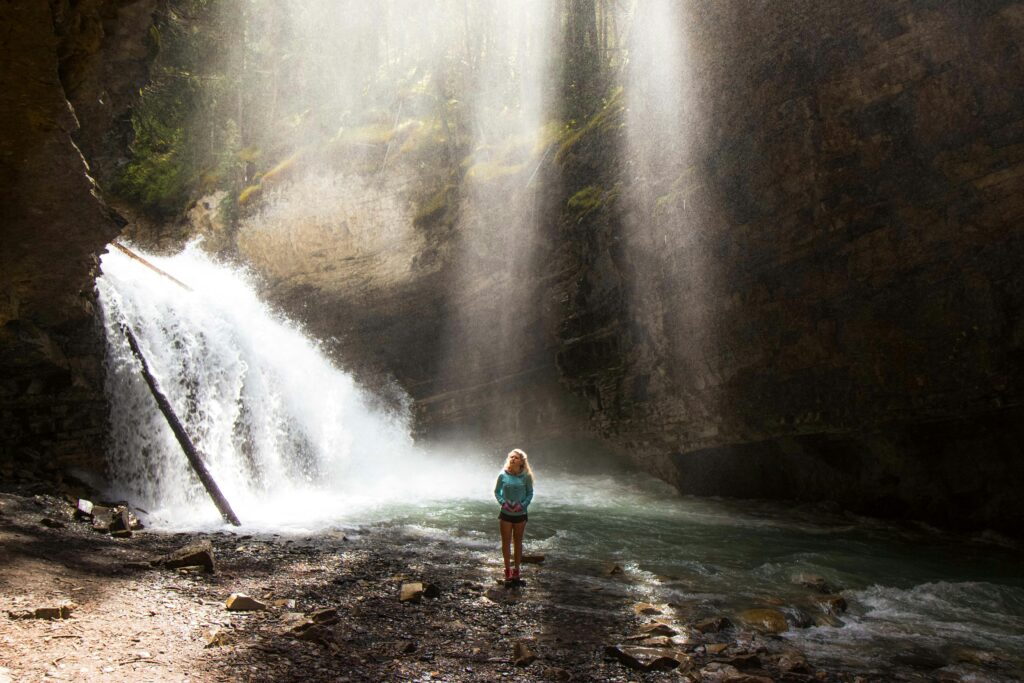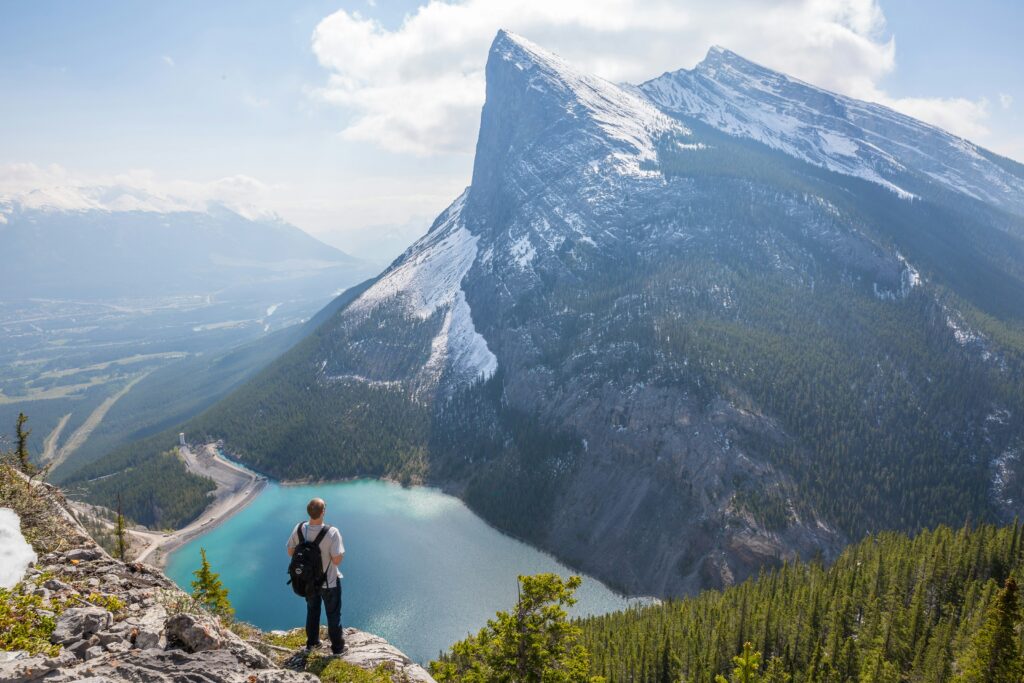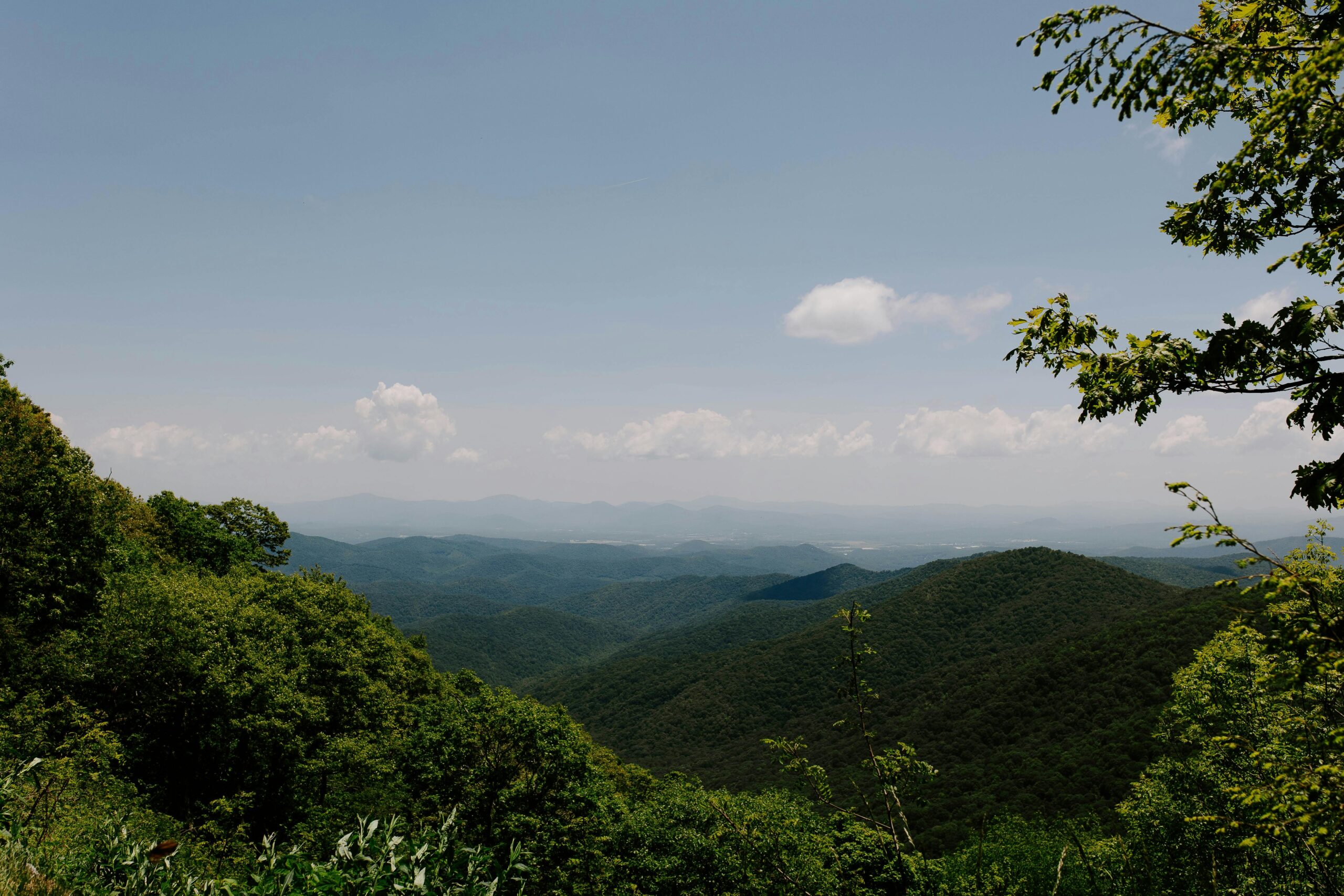How Long Does It Take to Hike the Appalachian Trail? A Journey Unfolded
Hiking the Appalachian Trail is an adventure of a lifetime, spanning approximately 2,200 miles (3,540 km) from Georgia to Maine. Completing this journey typically takes between 5 to 7 months for most thru-hikers, though the exact duration can vary widely based on several factors, including the hiker’s pace, physical condition, weather conditions, and the amount of time spent resting or resupplying.
How Long Does It Take to Hike the Appalachian Trail
Planning the Journey
For those considering this epic trek, the journey often begins with careful planning. Most northbound hikers, known as NOBOs, start their journey in early spring, typically between March and April, at Springer Mountain in Georgia. This timing helps avoid the harsh winter conditions that can linger in the southern states and ensures that hikers reach the northern terminus, Mount Katahdin in Maine, before the onset of winter in October.
The Hiking Pace
The pace at which a hiker progresses along the trail is one of the most significant factors determining the total time spent on the Appalachian Trail. In the early stages of the hike, it is common for hikers to cover 8-10 miles per day as they build their endurance and acclimate to the demands of the trail. As their fitness improves and they find their rhythm, daily mileage can increase to 12-20 miles. By the later stages, many hikers are capable of covering 15-25 miles per day, benefiting from the conditioning gained over months of trekking.
Weather and Trail Conditions
Weather plays a crucial role in the hiking experience. The Appalachian Trail traverses a wide range of climates and elevations, meaning hikers will encounter varying weather conditions from start to finish. Rain, snow, and extreme temperatures can all impact the pace of the hike. For instance, severe weather in the high elevations of the Smoky Mountains or the White Mountains can slow progress significantly. Conversely, favorable weather can make for faster, more enjoyable hiking days.
Physical Preparation and Health
A hiker’s physical condition is paramount. Those in excellent physical shape, with proper training and conditioning, are likely to hike faster and more efficiently. However, even the fittest individuals can face challenges, such as injuries, illnesses, or fatigue, which can necessitate additional rest days and impact the overall timeline.
Resupply and Rest Days
Regular resupply stops are necessary for food, gear, and other essentials. These stops, along with planned rest days, known as “zero days,” can add to the total time on the trail. Strategic planning of these breaks can help maintain a steady pace and prevent burnout. Typically, hikers plan resupply stops every 3-7 days, depending on their pace and the availability of towns and services along the trail.
Example Timeline
Consider a moderate-paced hiker who begins their journey on March 1 at Springer Mountain. With a consistent pace and minimal interruptions, they might aim to finish around August 31 at Mount Katahdin. This six-month journey allows for a balance of challenging hiking days and necessary rest periods, providing a sustainable pace for most thru-hikers.
Where Does the Appalachian Trail Start and End?

The Appalachian Trail (AT), one of the most iconic long-distance hiking trails in the world, stretches from the southern state of Georgia all the way to the northern reaches of Maine. This trail covers an impressive 2,190 miles, offering hikers an incredible journey through diverse landscapes, challenging terrains, and stunning natural beauty.
Starting Point: Springer Mountain, Georgia
The southern terminus of the Appalachian Trail is located at Springer Mountain in Georgia. This starting point is nestled within the Chattahoochee National Forest and is accessible via a 0.9-mile approach trail from a nearby forest service road. Hikers beginning their journey here are greeted with lush forests, rolling hills, and the excitement of embarking on a grand adventure. Early spring is a popular time to start, as it allows hikers to avoid the harsh winter conditions in the northern sections of the trail.
Key Highlights of the Starting Section:
- Springer Mountain: The official start of the AT, marked by a plaque and a logbook for hikers to sign.
- Amicalola Falls State Park: Many hikers begin at the 8.8-mile approach trail starting at this park, which features one of Georgia’s tallest waterfalls.
- Diverse Wildlife: Expect to see a variety of birds, deer, and possibly even black bears.
Ending Point: Mount Katahdin, Maine
The northern terminus of the Appalachian Trail is Mount Katahdin in Baxter State Park, Maine. Reaching this endpoint is a significant achievement, as it requires hikers to tackle some of the most challenging and remote sections of the trail. Mount Katahdin, standing at 5,267 feet, is the highest peak in Maine and offers breathtaking panoramic views from its summit. The climb to the top is steep and demanding, but the sense of accomplishment upon reaching the summit is unparalleled.
Key Highlights of the Ending Section:
- Mount Katahdin: The final ascent is a rigorous climb, culminating in stunning vistas from the peak.
- 100-Mile Wilderness: The last stretch before Baxter State Park, known for its remote and rugged terrain, testing hikers’ endurance and self-sufficiency.
- Baxter State Park: A beautiful, preserved natural area offering a range of wildlife and pristine landscapes.
The Journey Between
Between Springer Mountain and Mount Katahdin, hikers traverse 14 states, each offering its own unique challenges and scenic rewards. The trail meanders through the Great Smoky Mountains, the rolling hills of Virginia, the rocky outcrops of Pennsylvania, and the dense forests of New England. Along the way, hikers experience the camaraderie of fellow adventurers, the hospitality of trail towns, and the ever-changing beauty of the Appalachian landscape.
Notable Sections Along the Trail:
- Great Smoky Mountains National Park: Known for its diverse ecosystems and historic sites.
- Shenandoah National Park: Features picturesque vistas and abundant wildlife.
- White Mountains of New Hampshire: Renowned for their rugged terrain and stunning alpine scenery.
Preparing for the Appalachian Trail

Embarking on a journey along the Appalachian Trail (AT) is a thrilling adventure that requires thorough preparation. Whether you’re planning to thru-hike the entire 2,190 miles or tackle a section of the trail, being well-prepared will help ensure a safe and enjoyable experience.
Physical Preparation
- Build Your Endurance
- Start Training Early: Begin your training several months before your hike. Focus on cardio exercises like running, biking, or swimming to build your stamina.
- Hike Regularly: Get used to carrying a backpack by hiking local trails. Gradually increase the distance and elevation to simulate trail conditions.
- Strength Training: Incorporate strength training exercises, especially for your legs, core, and upper body, to handle the physical demands of the trail.
- Practice with Your Gear
- Backpack: Get comfortable with your backpack by carrying it on practice hikes. Make sure it’s properly adjusted to avoid discomfort.
- Footwear: Invest in sturdy, well-fitting hiking boots or shoes. Break them in to prevent blisters.
- Clothing: Wear moisture-wicking, quick-drying clothing suitable for varying weather conditions.
Gear Preparation
- Essential Gear
- Backpack: A well-fitted backpack with a capacity of 50-70 liters.
- Shelter: A lightweight tent, hammock, or tarp for sleeping.
- Sleeping Bag and Pad: Choose a sleeping bag rated for the coldest temperatures you’ll encounter and a comfortable sleeping pad.
- Navigation Tools: A map, compass, and GPS device or smartphone app.
- Clothing
- Layering System: Base layer (moisture-wicking), mid-layer (insulation), and outer layer (waterproof/windproof).
- Hiking Socks: Merino wool or synthetic socks to prevent blisters.
- Rain Gear: Waterproof jacket and pants.
- Food and Water
- Food: Plan for lightweight, high-calorie meals and snacks. Consider dehydrated meals, nuts, dried fruit, and energy bars.
- Water: Carry a water filtration system or purification tablets. Plan to refill at streams, springs, and shelters.
- Safety and First Aid
- First Aid Kit: Include bandages, antiseptics, blister treatment, pain relievers, and any personal medications.
- Emergency Items: A whistle, multi-tool, fire starter, and emergency blanket.
Planning Your Hike
- Route Planning
- Research the Trail: Study maps and guidebooks to understand the trail’s layout, major landmarks, and resupply points.
- Itinerary: Plan a flexible itinerary, considering your daily mileage goals, rest days, and resupply stops.
- Permits and Regulations
- Permits: Check if you need permits for specific sections of the trail, like the Great Smoky Mountains National Park and Baxter State Park.
- Leave No Trace: Follow Leave No Trace principles to minimize your impact on the environment.
- Resupply Strategy
- Resupply Points: Identify towns and stores along the trail where you can buy food and supplies.
- Mail Drops: Consider mailing packages to post offices or hostels along the trail with essential supplies.
Mental Preparation
- Set Realistic Expectations
- Understand Challenges: Be prepared for physical exhaustion, unpredictable weather, and mental fatigue.
- Stay Positive: Cultivate a positive mindset and remind yourself of your reasons for hiking.
- Stay Informed
- Trail Conditions: Stay updated on trail conditions and weather forecasts.
- Community: Connect with other hikers through forums, social media, and local hiking groups for advice and support.
Top Views on the Appalachian Trail

Hiking the Appalachian Trail is not just about the journey but also the breathtaking views you encounter along the way. Here are some of the top scenic vistas that hikers rave about, offering panoramic beauty and unforgettable moments:
1. McAfee Knob, Virginia
McAfee Knob is perhaps the most photographed spot on the Appalachian Trail, and for good reason. Located near Roanoke, Virginia, this rocky outcrop offers stunning 270-degree views of the Catawba Valley and surrounding mountains. The dramatic cliff edge is perfect for a memorable photo and a moment of reflection.
2. Clingmans Dome, Tennessee/North Carolina Border
As the highest point on the Appalachian Trail at 6,643 feet, Clingmans Dome provides spectacular views of the Great Smoky Mountains National Park. The observation tower at the summit offers a 360-degree panorama, where on a clear day, you can see up to 100 miles in all directions.
3. Max Patch, North Carolina
Max Patch is a grassy bald mountain that offers expansive, unobstructed views of the surrounding mountains and valleys. This spot is known for its rolling meadows, making it a perfect place for a picnic and to enjoy both sunrise and sunset.
4. Roan Highlands, Tennessee/North Carolina Border
The Roan Highlands feature a series of grassy balds that provide sweeping views of the Appalachian Mountains. This section of the trail is particularly beautiful in June when the rhododendrons are in full bloom, adding a splash of color to the landscape.
5. Dragon’s Tooth, Virginia
Dragon’s Tooth is a unique rock formation that offers hikers a challenging climb and rewarding views. The rugged summit provides a dramatic vista of the surrounding valleys and ridges, making it a favorite spot for adventurous hikers.
6. Franconia Ridge, New Hampshire
Franconia Ridge offers one of the most exhilarating hikes on the Appalachian Trail, with stunning alpine views. The ridge walk provides panoramic views of the White Mountains, and on a clear day, you can see the Presidential Range, including Mount Washington.
7. Mount Katahdin, Maine
The northern terminus of the Appalachian Trail, Mount Katahdin, is a breathtaking finale for thru-hikers. The Knife Edge trail to the summit is both challenging and rewarding, offering incredible views of Baxter State Park and the surrounding wilderness.
8. Tinker Cliffs, Virginia
Tinker Cliffs offer another magnificent viewpoint in Virginia, with dramatic cliffs overlooking the Catawba Valley. This spot provides a different perspective of the same valley seen from McAfee Knob, making it a worthwhile addition to any hiker’s itinerary.
9. Bear Mountain, New York
Bear Mountain provides stunning views of the Hudson River and surrounding highlands. The Perkins Memorial Tower at the summit offers a 360-degree view that is especially beautiful during the fall when the foliage is at its peak.
10. Bigelow Mountain, Maine
Bigelow Mountain offers hikers some of the most spectacular views in Maine. The Avery Peak and West Peak provide expansive vistas of the surrounding lakes and forests, and on a clear day, you can even see Mount Katahdin in the distance.
Best Season for Hiking the Appalachian Trail

When planning to hike the Appalachian Trail, choosing the right season is crucial for a safe and enjoyable experience. The trail spans over 2,190 miles and passes through 14 states, offering diverse weather conditions and challenges throughout the year. Here’s a breakdown of the best seasons for hiking the Appalachian Trail:
Detailed Overview
Spring (March – May)
- Advantages: Mild temperatures make hiking more comfortable, especially in the southern states. Wildflowers and blooming plants add to the scenic beauty. Water sources are plentiful due to spring rains.
- Disadvantages: Trails can be muddy from melting snow and rain. Late winter storms are possible, particularly in higher elevations. Ticks are more active during this season.
- Best For: Ideal for starting a northbound thru-hike. Enjoying the early season flora and avoiding the summer heat.
Summer (June – August)
- Advantages: Longer days provide more hiking time. Warm weather makes for comfortable nights. Stream crossings are easier as water levels drop.
- Disadvantages: Hot and humid conditions can be exhausting, especially in lower elevations. Trails can be crowded with other hikers. Bugs, including mosquitoes and flies, are more active.
- Best For: Higher elevation hikes where temperatures are cooler. Section hikes in the northern states, where the weather is milder.
Fall (September – November)
- Advantages: Cooler temperatures are ideal for hiking. The fall foliage provides stunning scenery. There are fewer bugs compared to summer.
- Disadvantages: Shorter days mean less daylight for hiking. Nights can be quite cold, especially in northern states. Early snow can occur in higher elevations.
- Best For: Starting a southbound thru-hike. Enjoying the autumn colors and cooler weather.
Winter (December – February)
- Advantages: Trails are less crowded, offering solitude. Clear air provides better visibility for long-distance views. The winter landscape offers a unique and serene beauty.
- Disadvantages: Cold temperatures require appropriate gear and experience. Snow and ice make trails slippery and challenging. Daylight hours are limited.
- Best For: Experienced hikers prepared for winter conditions. Short section hikes in southern states where the weather is milder.
FAQ:-
What is the Appalachian Trail?
The Appalachian Trail (AT) is a long-distance hiking trail that stretches approximately 2,190 miles across the eastern United States, from Springer Mountain in Georgia to Mount Katahdin in Maine. It passes through 14 states and is one of the most famous hiking trails in the world.
How long does it take to hike the entire Appalachian Trail?
Thru-hiking the entire Appalachian Trail typically takes between 5 to 7 months. The duration depends on factors such as the hiker’s pace, physical condition, weather conditions, and the amount of time spent resting or resupplying.
What is the best time to start a thru-hike on the Appalachian Trail?
The best time to start a northbound thru-hike (from Georgia to Maine) is in early spring, usually between March and April. This timing helps hikers avoid winter conditions in the northern states. Southbound thru-hikes (from Maine to Georgia) typically start in late June to early July.
How many states does the Appalachian Trail go through?
The Appalachian Trail passes through 14 states: Georgia, North Carolina, Tennessee, Virginia, West Virginia, Maryland, Pennsylvania, New Jersey, New York, Connecticut, Massachusetts, Vermont, New Hampshire, and Maine.
Do I need a permit to hike the Appalachian Trail?
Permits are required for certain sections of the Appalachian Trail, such as the Great Smoky Mountains National Park and Baxter State Park in Maine. However, no single permit covers the entire trail. It’s important to check the regulations for each section you plan to hike.
What kind of gear do I need for the Appalachian Trail?
Essential gear includes a well-fitted backpack, shelter (tent, hammock, or tarp), sleeping bag and pad, proper clothing (layering system), sturdy hiking boots or shoes, food and water supplies, navigation tools, and a first aid kit. Gear should be lightweight and suitable for long-distance hiking.
How do I resupply food and supplies on the Appalachian Trail?
Resupply points are available in towns and stores along the trail. Many hikers plan their resupply stops every 3-7 days, depending on their pace and the availability of resupply points. Some hikers also use mail drops, sending packages to post offices or hostels along the trail.
What are the biggest challenges of hiking the Appalachian Trail?
Challenges include physical exhaustion, unpredictable weather, difficult terrain, mental fatigue, and the need for proper planning and logistics. Hikers must be prepared for a variety of conditions and maintain a positive mindset to overcome these challenges.
Can I hike the Appalachian Trail in sections?
Yes, many hikers choose to section hike the Appalachian Trail, completing it over several years. This allows for more flexibility and can be a more manageable option for those with time constraints.
How can I stay safe on the Appalachian Trail?
Safety tips include staying informed about trail conditions, carrying a first aid kit and emergency supplies, letting someone know your itinerary, staying aware of weather forecasts, and following Leave No Trace principles to minimize environmental impact.
What wildlife might I encounter on the Appalachian Trail?
Hikers may encounter a variety of wildlife, including black bears, deer, snakes, and numerous bird species. It’s important to follow guidelines for safely storing food and keeping a safe distance from wildlife.
Conclusion
The Appalachian Trail, an iconic long-distance hiking trail, stretches 2,190 miles through 14 states, offering diverse landscapes from lush forests to rugged mountains. Successful hikes require thorough preparation, including physical training, gear selection, and route planning, as well as understanding the best season to hike. Spring offers mild temperatures, summer provides long daylight hours, fall showcases vibrant foliage, and winter offers solitude. The trail is dotted with breathtaking vistas, such as the iconic McAfee Knob, the highest peak at Clingmans Dome, the rolling meadows of Max Patch, and the rugged beauty of Dragon’s Tooth. Other highlights include the panoramic views from Franconia Ridge, the dramatic summits of Mount Katahdin, and the expansive vistas from Bigelow Mountain. Each viewpoint offers a unique perspective, connecting hikers deeply with nature. The Appalachian Trail is not just a hike but an experience of a lifetime, leaving hikers with lasting memories, a sense of accomplishment, and a profound appreciation for the natural world. Embrace the challenge, savor the moments, and enjoy the unparalleled adventure that is the Appalachian Trail.
Hello! I’m,Ratndip a dedicated trekking enthusiast with a deep love for exploring the world’s most captivating trails. With over 2 years of trekking experience, I’ve had the privilege of hiking through stunning landscapes, from the majestic Himalayas to the lush Amazon rainforest. My journey into trekking started as a personal quest for adventure and has evolved into a lifelong passion for discovering new terrains and connecting with nature.
